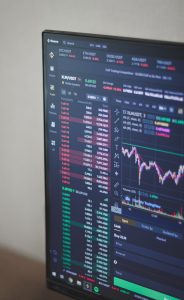Forex, or foreign exchange, is the largest financial market in the world, with a daily turnover of over $5 trillion. It is a decentralized market, which means that it is not owned or controlled by any government or financial institution. Instead, it is a network of banks, brokers, and traders who buy and sell currencies around the clock.
The forex market is highly volatile and can be influenced by a wide range of factors. These factors can be broadly divided into two categories: fundamental factors and technical factors.
Fundamental factors are those that affect the underlying economies and political situations of the countries whose currencies are being traded. These factors include:
1. Economic indicators: Economic data, such as GDP, inflation, and employment figures, can have a significant impact on currency prices. Positive economic data can lead to an increase in demand for a currency, while negative economic data can lead to a decrease in demand.
2. Central bank policies: Central banks, such as the Federal Reserve in the US and the European Central Bank in the eurozone, have a significant impact on currency prices. Interest rates, monetary policy, and quantitative easing programs can all affect the value of a currency.
3. Political events: Geopolitical events, such as elections, wars, and natural disasters, can also affect currency prices. Political instability can lead to a decrease in demand for a currency, while political stability can lead to an increase in demand.
4. Trade and capital flows: International trade and capital flows can also affect currency prices. A country with a trade surplus, for example, may see an increase in demand for its currency as foreign investors seek to invest in the country.
Technical factors, on the other hand, are those that are related to the trading activity in the forex market itself. These factors include:
1. Market sentiment: Market sentiment refers to the overall mood of traders and investors in the market. If traders are optimistic about a currency, for example, this can lead to an increase in demand and a rise in price.
2. Technical analysis: Technical analysis involves using charts and other tools to analyze past price movements and identify trends. Traders use technical analysis to make predictions about future price movements and to identify entry and exit points for trades.
3. Liquidity: Liquidity refers to the ease with which a currency can be bought or sold. Currencies that are more liquid, such as the US dollar or the euro, are generally easier to trade and tend to have more stable prices.
4. Market manipulation: Finally, it is important to note that the forex market can be subject to manipulation by large financial institutions or individual traders. This can lead to sudden, unexpected changes in currency prices.
In conclusion, the forex market is influenced by a wide range of factors, both fundamental and technical. Traders must stay up to date with economic data, central bank policies, political events, and market sentiment in order to make informed trading decisions. Technical analysis and an understanding of liquidity and market manipulation are also important for successful forex trading. Ultimately, the forex market is highly unpredictable and requires careful risk management and a long-term trading strategy for success.





